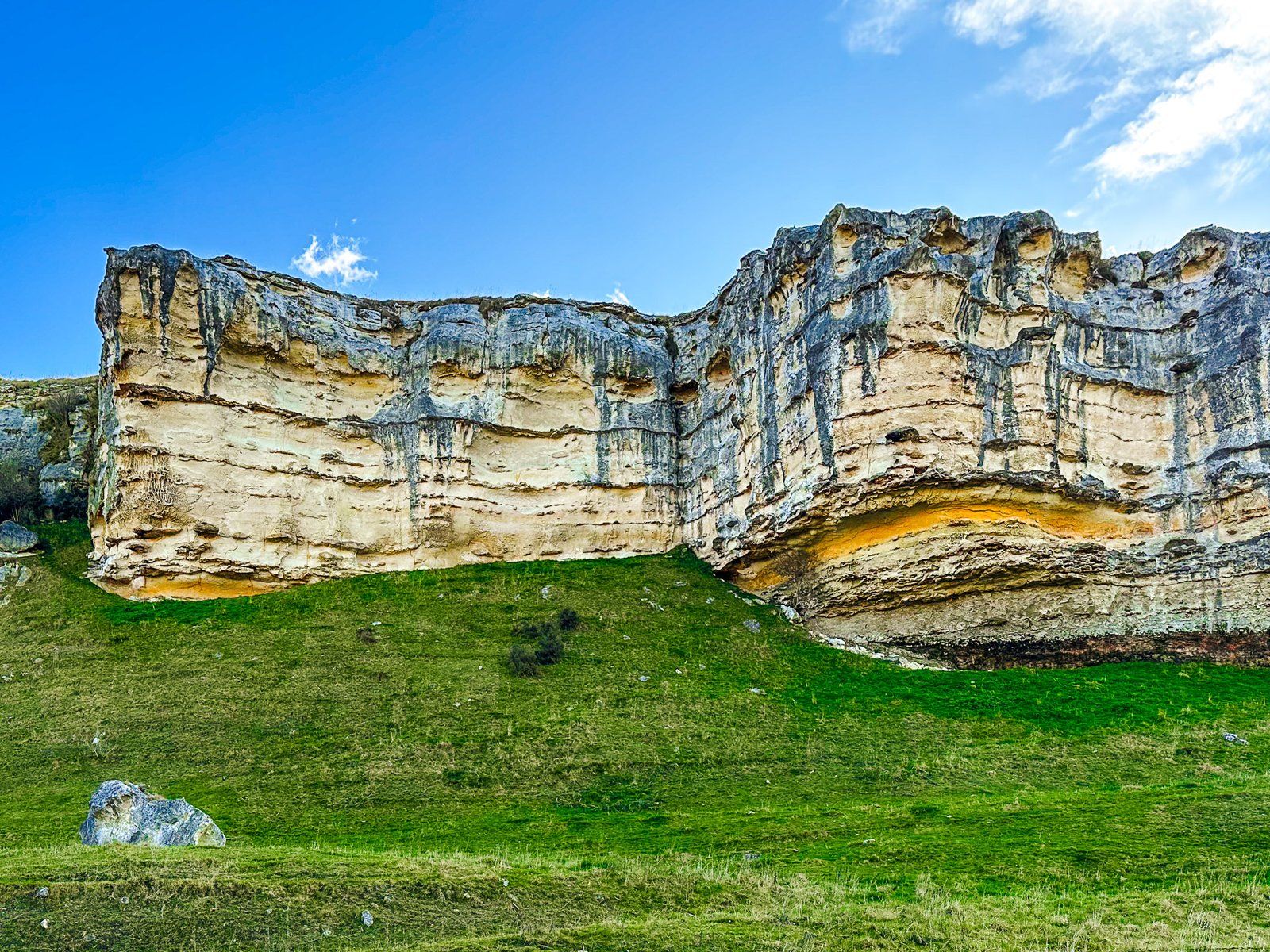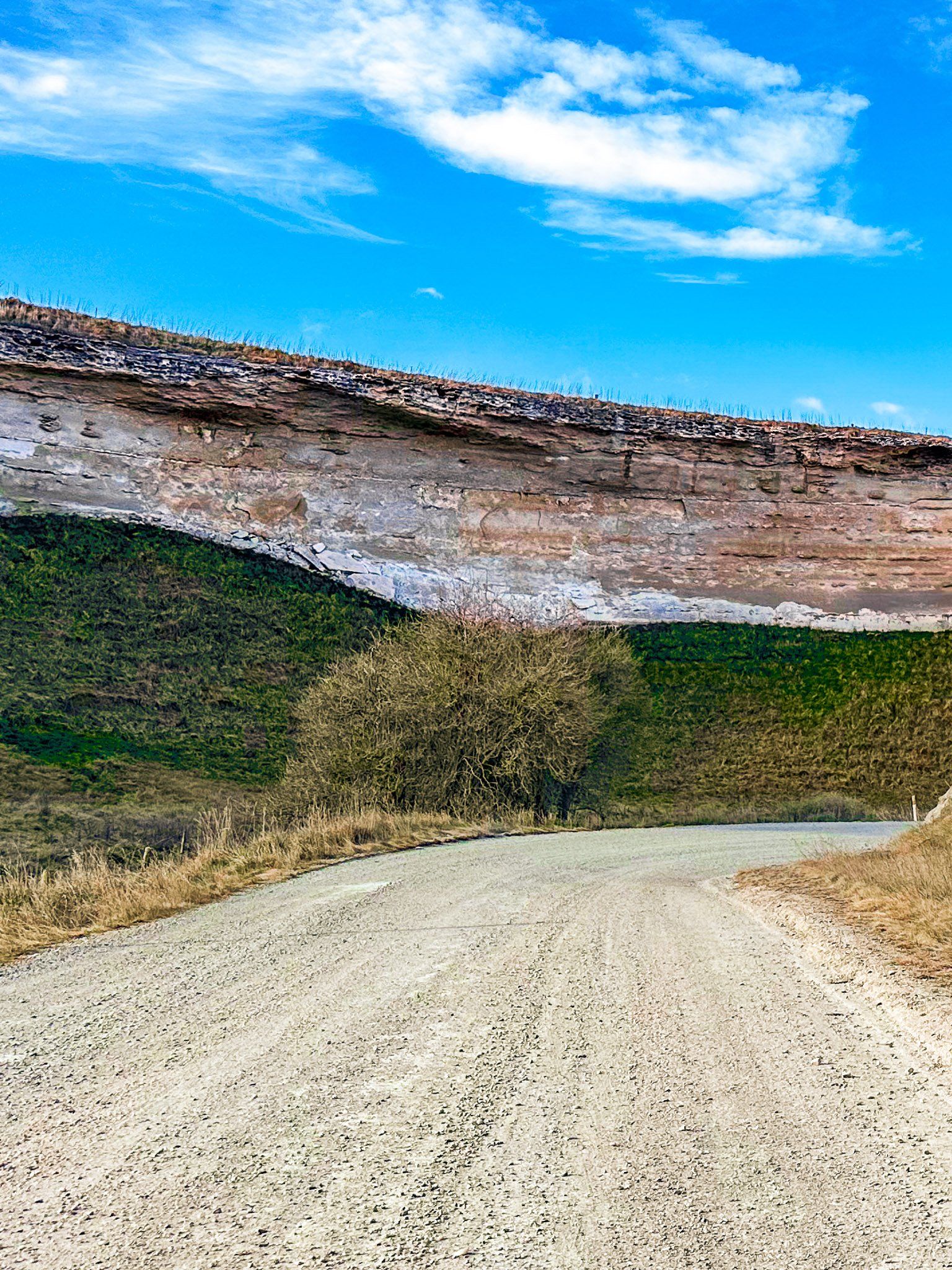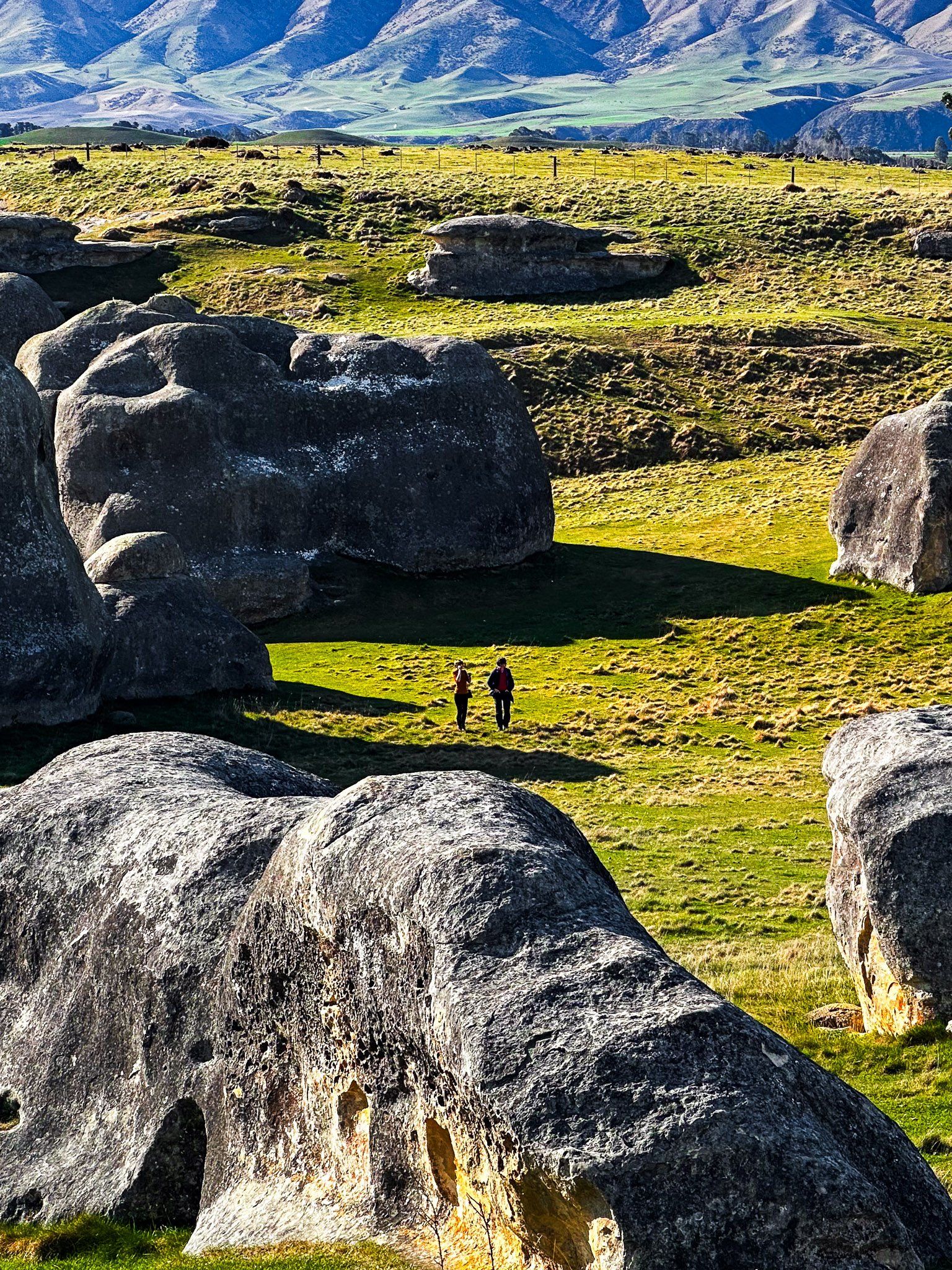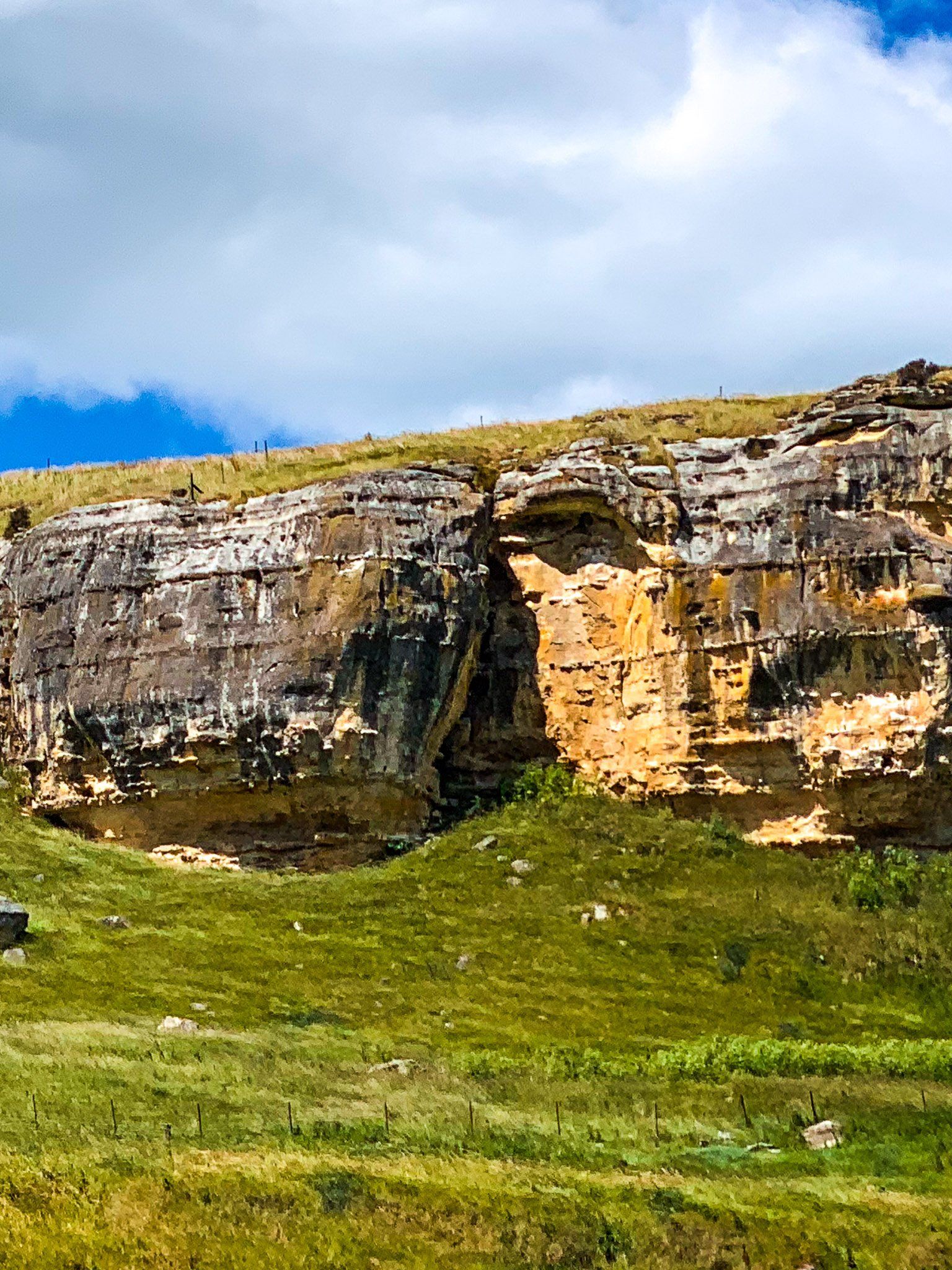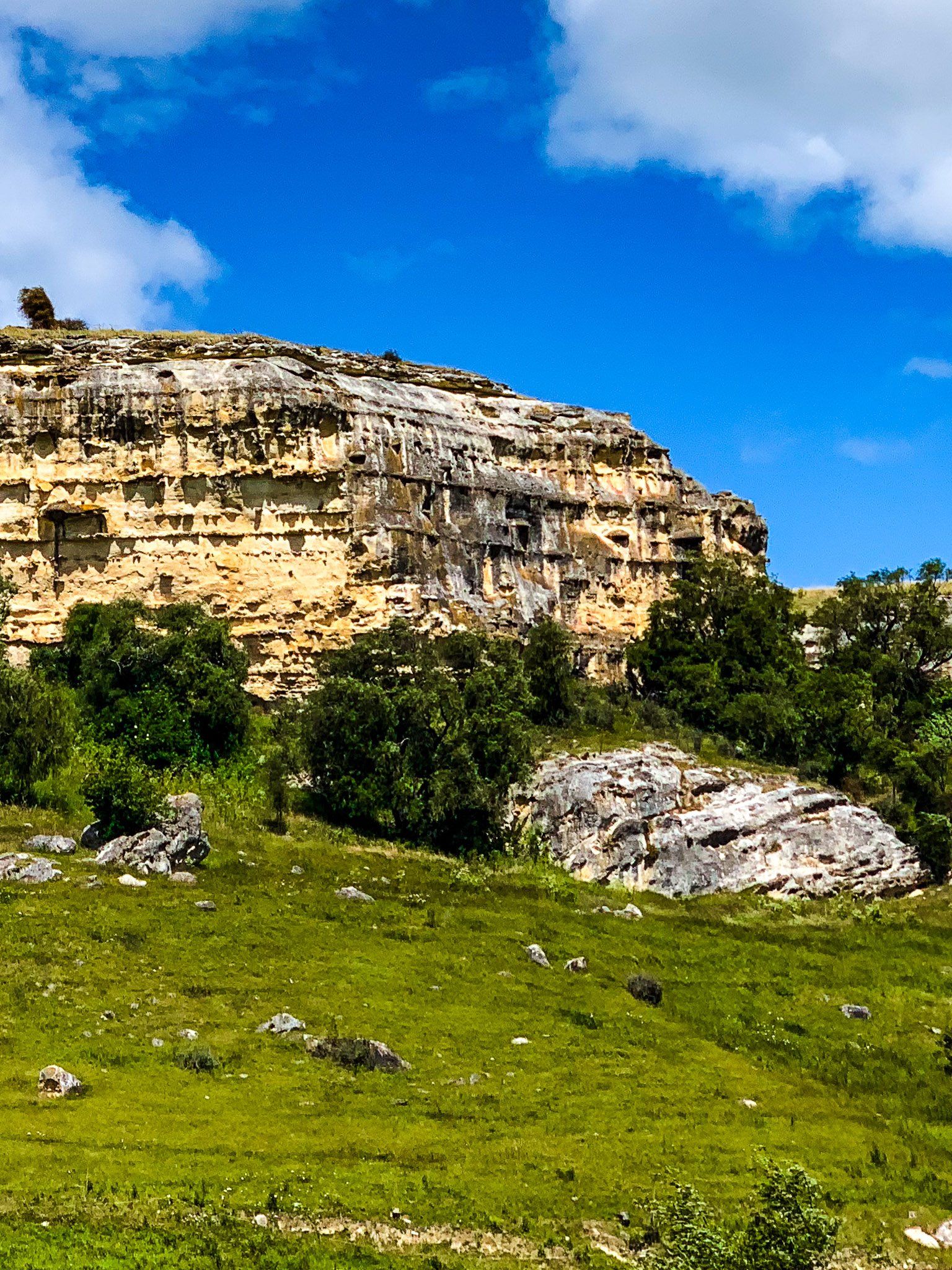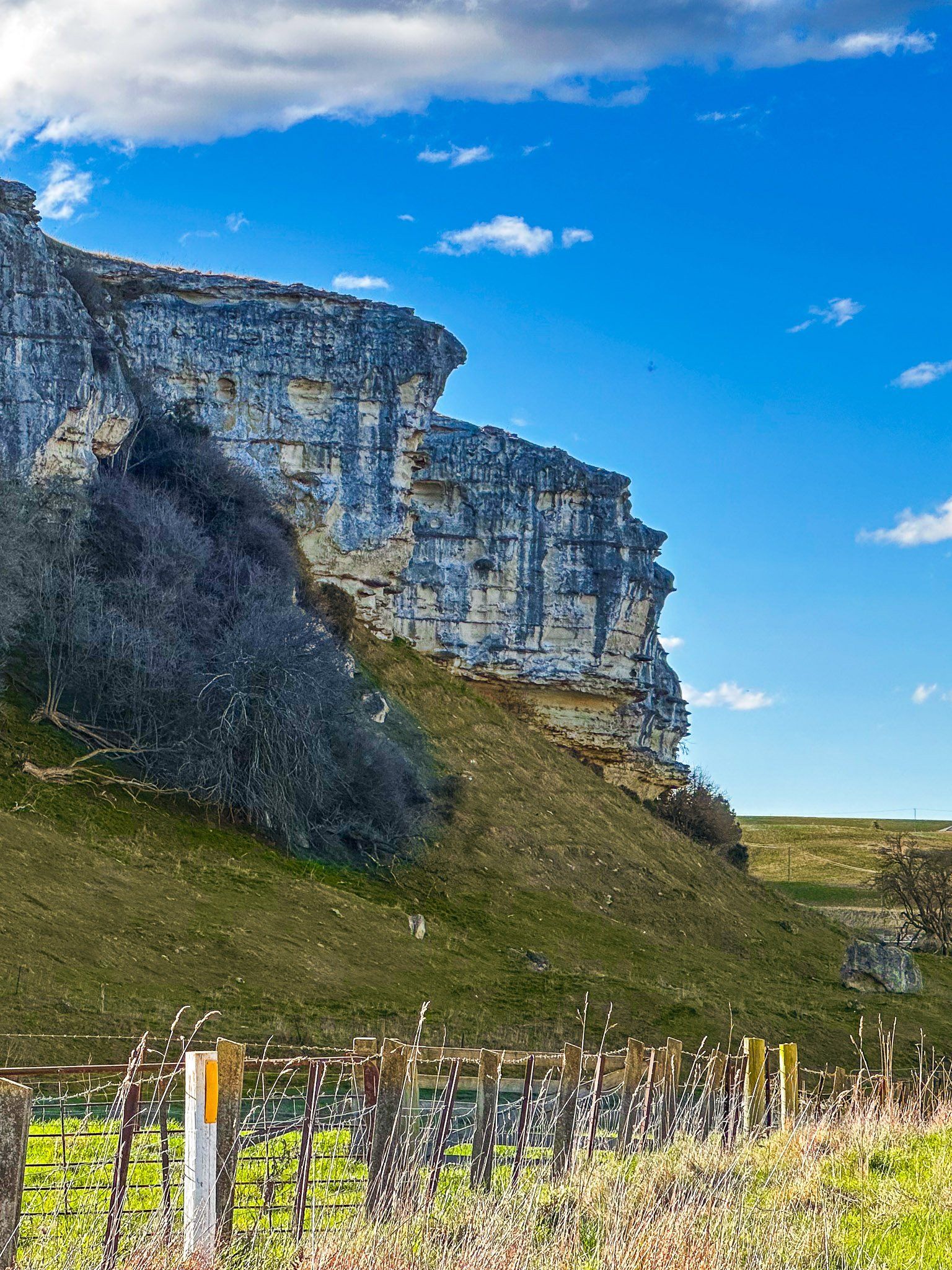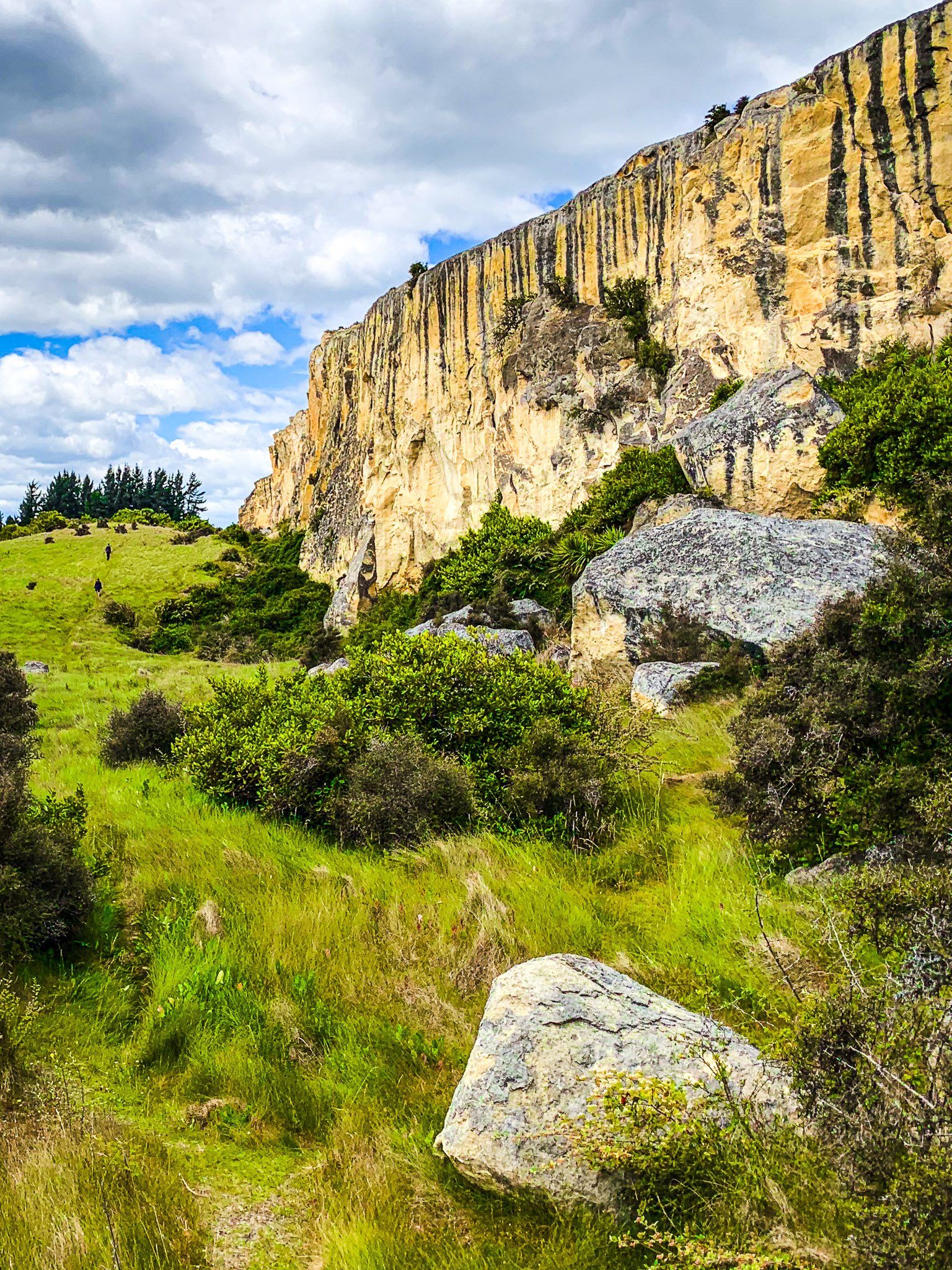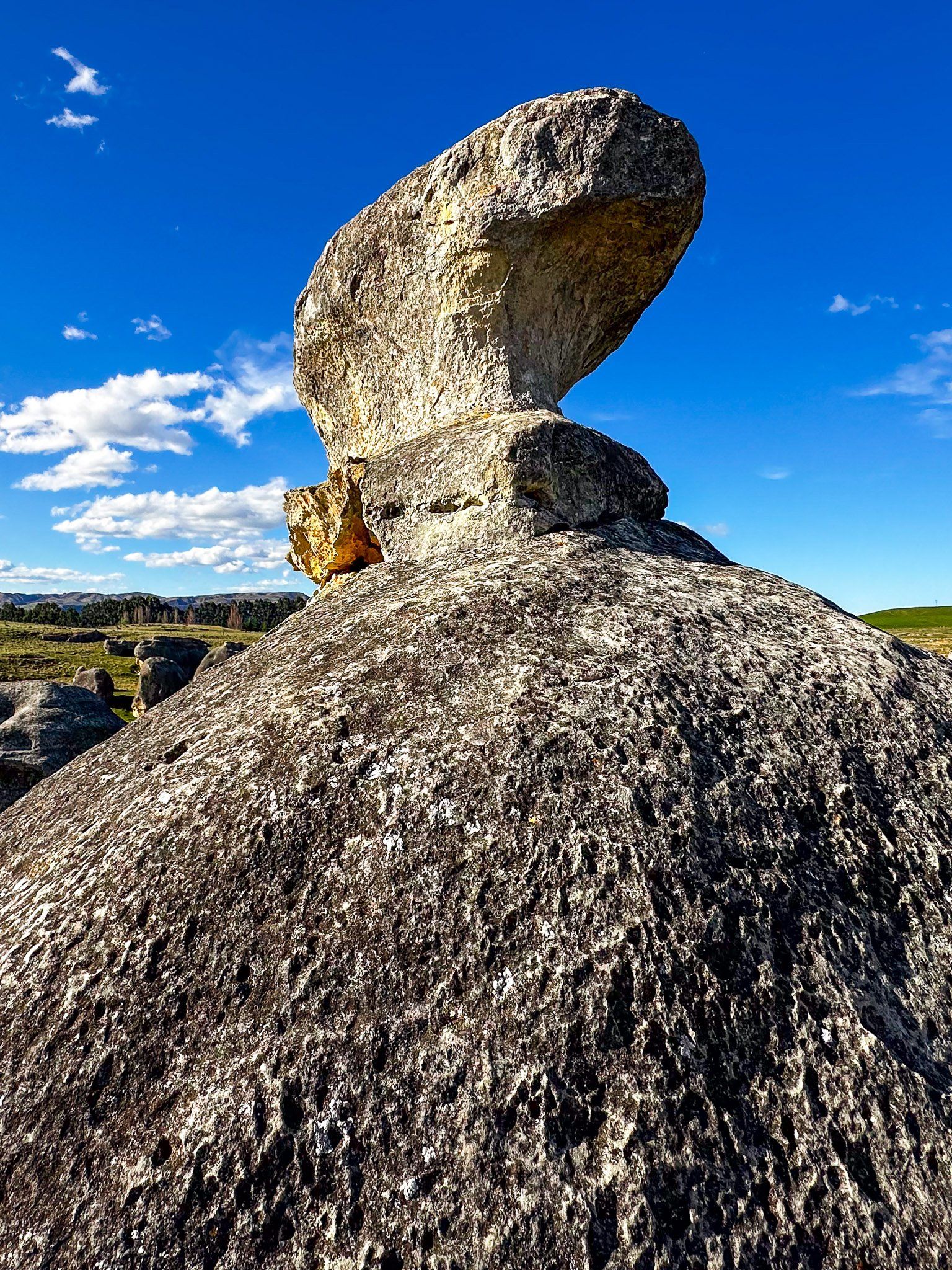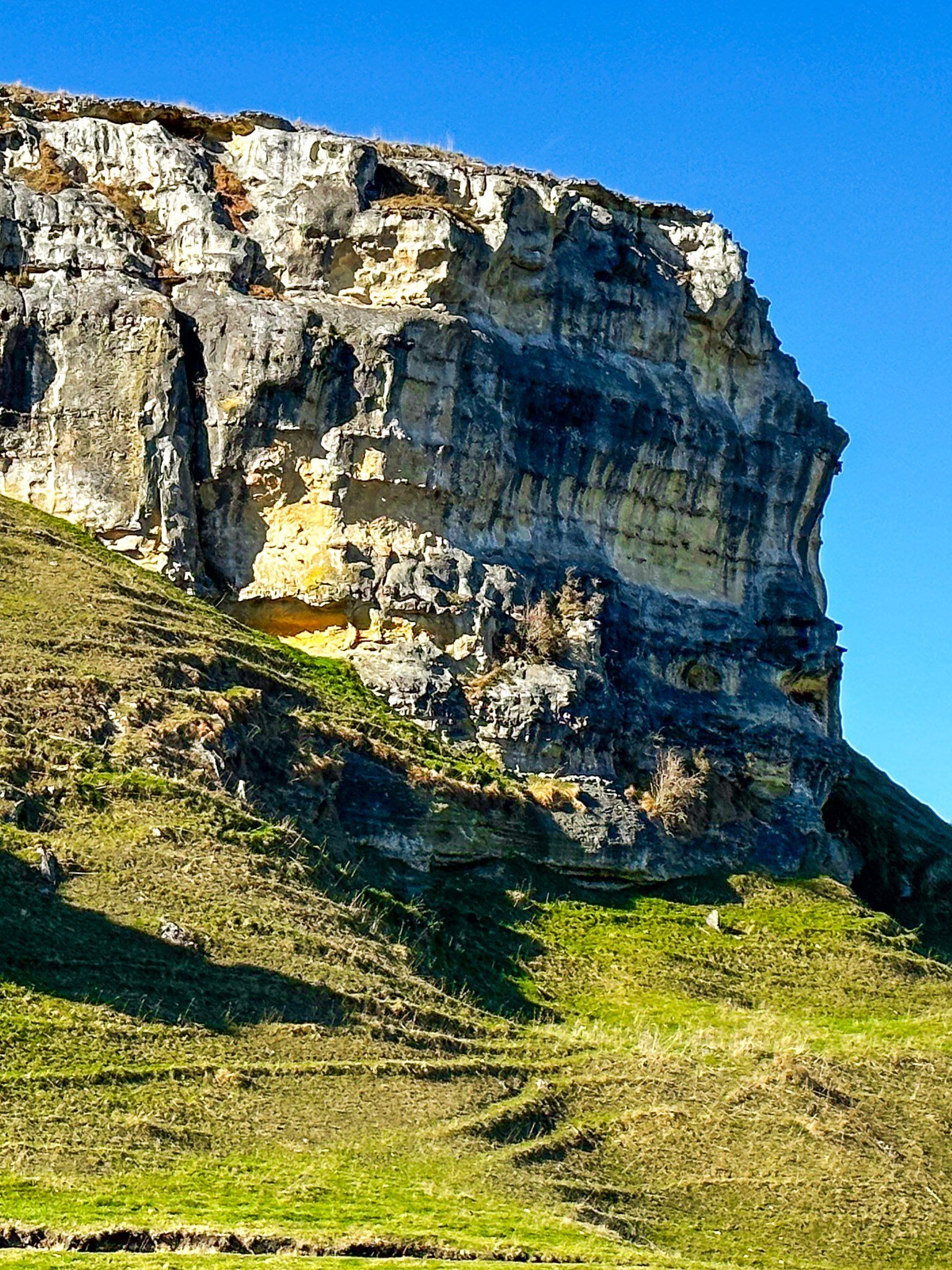Waitaki Whitestone (also Ōamaru Whitestone) is the popular name given to Otekaike Limestone found in the Waitaki region of the South Island. The whitestone was famously quarried to build a major part of Victorian and Edwardian downtown Ōamaru. However, this made only a tiny dent in the extensive natural limestone features of the region.
The whitestone formation developed around 25 million years ago, with layers of sediment and dead marine animals compressing under a shallow sea. This was eventually uplifted from the sea as part of the creation of New Zealand Aotearoa.
Subsequent erosion has created interesting rock formations, from white to cream to yellow-coloured cliffs. Fossils that match the age of the limestone can also be viewed, along with Māori rock drawings on the cliffs in some locations.
These features are especially prominent near the small town of Duntroon on the south side of the Waitaki River, accessible on State Highway 83, about 42 km northwest of Ōamaru.
The short one-day tour route starts in Duntroon with a visit to the Vanished World Centre. This is a small but fun mashup of a fossil and rock museum, activity centre, and souvenir shop. There, you can get a map and general guidance on the nearby Whitestone features and examples of marine fossils (including ancient whales) found in the nearby cliffs and promontories.
The best spots include the Takiroa Māori Rock Drawings, Earthquakes Waipata, Elephant Rocks and the nearby Anatini Fossils. From there, tour Island Cliff for some of the most accessible examples of exposed cliffs.
Many of these locations, and others around the wider Waitaki region, are marked by “Vanished World” road signs, which can be a bit obscure. Other signage is more prominent, but a map is useful. The Alps2Ocean Cycle Trail also runs through the area, so it is easy to tour most of the sites from the bike trail.
